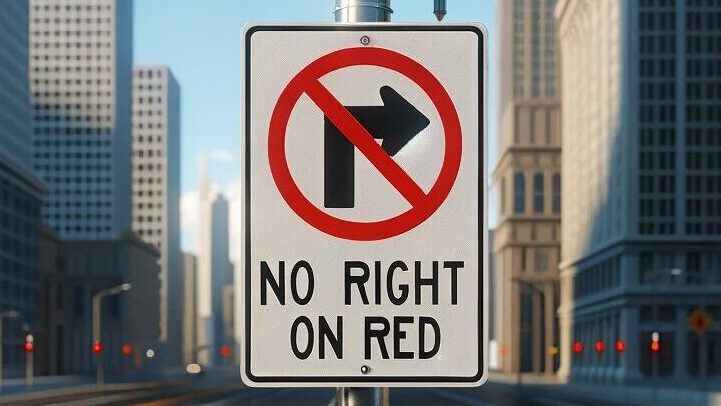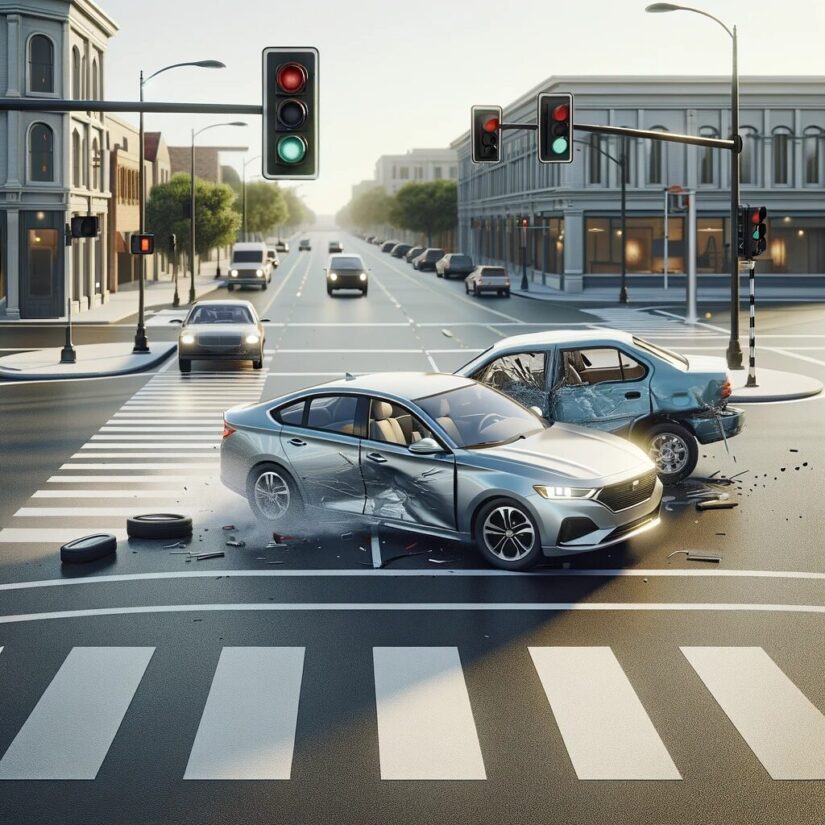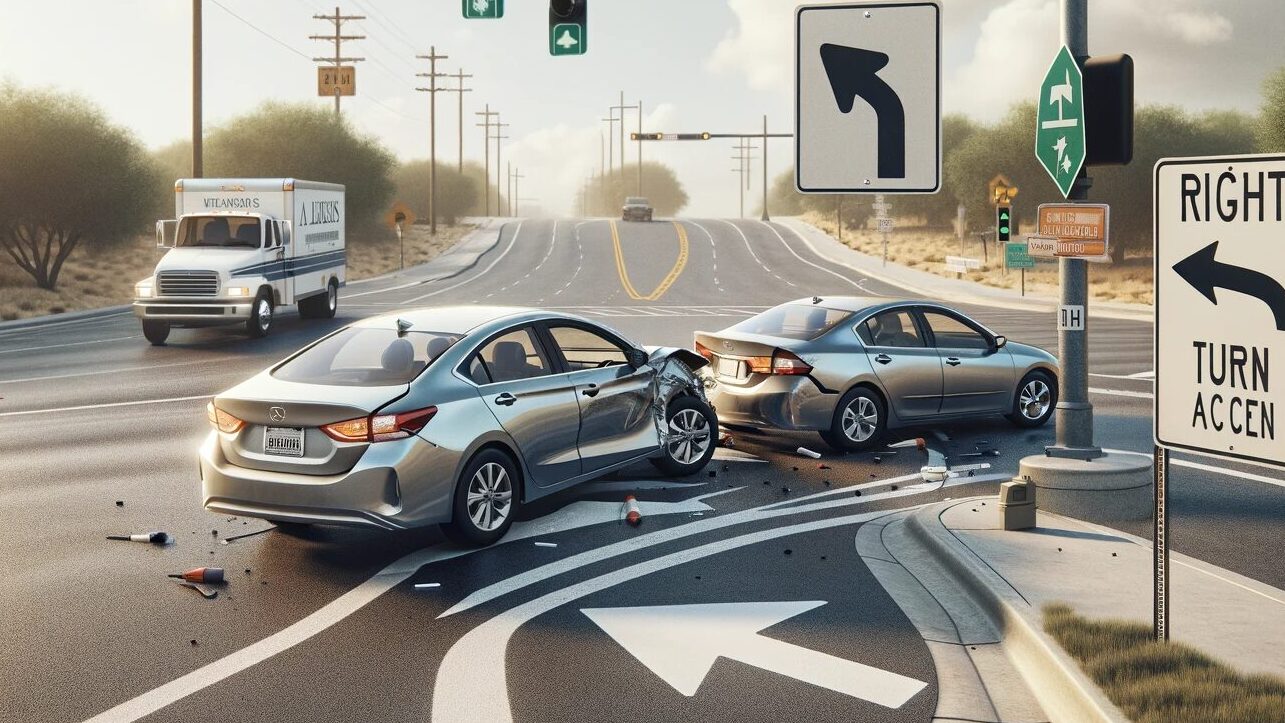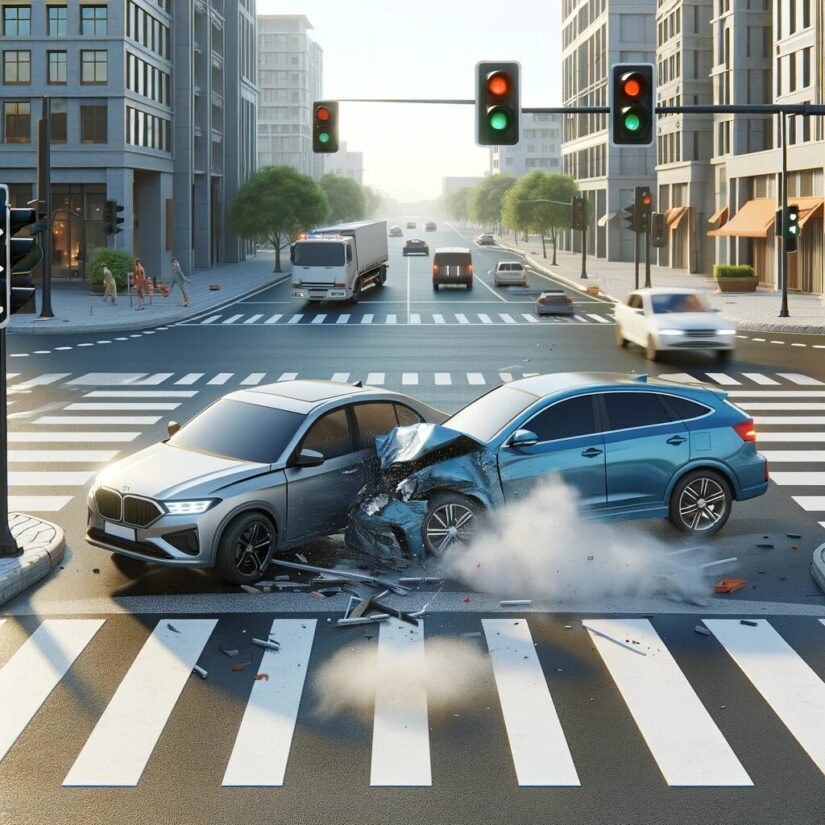Right Turn Accidents in Texas: A Comprehensive Guide
January 28, 2024

I’m a personal injury lawyer in Texas, specializing in cases involving right turn accidents. Right turn accidents are more common than many people realize, and they can be quite complex. In this article, I’ll break down what you need to know about these accidents.
We’ll explore why right turn accidents happen, how to prevent them, and what to do if you’re involved in one. Understanding the rules of the road and your legal rights is key. Whether you’re a driver, cyclist, or pedestrian, this information is crucial for your safety on Texas roads.
Stay informed and stay safe. Let’s dive into the world of right turn accidents in Texas together.
Here’s an overview:
- Key Takeaways
- Understanding Right Turn Accidents
- 1. What is a Right Turn Accident?
- 2. Common Causes
- 3. The Role of Negligence
- 4. Texas Traffic Laws on Right Turns
- 5. Hypothetical Example
- Immediate Steps After a Right Turn Accident
- 1. Ensure Safety
- 2. Call the Authorities
- 3. Gather Evidence
- 4. Exchange Information
- 5. Seek Medical Attention
- 6. Notify Your Insurance Company
- 7. Legal Consultation
- Assessing the Damage and Injuries
- Legal Options for Victims of Right Turn Car Crashes
- How to Deal with Insurance Companies
- The Role of a Personal Injury Lawyer
- Conclusion
Key Takeaways
- Right Turn Accidents in Texas: They are common and have specific legal considerations.
- Immediate Steps: Safety first, call authorities, gather evidence, and exchange information.
- Damage and Injury Assessment: Document all injuries and property damage.
- Legal Options: Understand personal injury claims and the importance of proving fault.
- Dealing with Insurance: Navigate claims cautiously and be aware of insurance tactics.
- Personal Injury Lawyer’s Role: Seek legal expertise for negotiation and representation.
- Conclusion: Stay informed, act prudently, and seek professional advice when needed.
These key points offer a comprehensive overview of navigating right turn accidents in Texas, focusing on safety, legal rights, and the importance of informed decision-making.
Understanding Right Turn Accidents

Right turn accidents in Texas are more common than you might think. Here’s a breakdown of what they are and why they happen:
1. What is a Right Turn Accident?
- Definition: A right turn accident occurs when a vehicle making a right turn collides with another vehicle, cyclist, or pedestrian.
- Common Situations: These can happen at intersections, parking lot exits, or even when merging onto highways.
2. Common Causes
- Failing to Yield: A driver making the right turn at a stop sign or traffic signal must yield to oncoming traffic or pedestrians. Not doing so can lead to accidents. This is known as “failure to yield the right of way” and it’s a form of negligence.
- Speed: Turning too fast can result in the driver losing control.
- Distractions: Using a phone, eating, or other distractions can cause a driver to make a dangerous turn.
- Obstructed Views: Sometimes, parked cars or other obstacles block the view of oncoming traffic or pedestrians.
- Ignoring Traffic Signals: Running a red light or not following traffic signs can lead to collisions.
3. The Role of Negligence
- Negligence Explained: In legal terms, negligence is when someone fails to take reasonable care to avoid causing injury or loss to another person.
- Examples: A driver who is texting while turning right and hits a pedestrian is negligent.
- Legal Impact: In a personal injury case, proving negligence is crucial to obtaining compensation.
4. Texas Traffic Laws on Right Turns
In Texas, the laws governing right turns and related traffic behavior are detailed in several sections of the Texas Transportation Code. Here’s a brief summary:
- Texas Transportation Code § 545.101: This section requires drivers to make right turns as close as practicable to the right-hand curb or edge of the roadway.
- Texas Transportation Code § 545.103: This statute addresses the use of turn signals, mandating that drivers must signal their intention to turn or change lanes using their vehicle’s turn signals.
- Texas Transportation Code § 545.151: This law obligates drivers to obey traffic control signals (like stop lights and signs), crucial for managing right turns at intersections.
- Texas Transportation Code § 545.153: This section deals with yielding the right-of-way at intersections, a key rule for safely executing right turns, especially when other vehicles or pedestrians are present.
Each of these statutes plays a vital role in ensuring safe and orderly traffic flow, particularly concerning right turns. Adhering to these laws not only enhances road safety but also minimizes the risk of legal consequences for drivers. For detailed information on these statutes, you can refer to the Texas Transportation Code.
5. Hypothetical Example
Let’s say I’m representing John, who was hit by a car while walking across a crosswalk. The driver turned right without looking. John sustained injuries. In this case, John could claim compensation because the driver was negligent.
Immediate Steps After a Right Turn Accident

If you’re involved in a right turn accident in Texas, acting quickly and wisely is crucial. Here’s what you should do:
1. Ensure Safety
- Move to a Safe Area: If you can, move your vehicle to the side of the road to avoid blocking traffic and further accidents.
- Check for Injuries: Before anything else, check if anyone involved needs immediate medical attention. Safety first!
2. Call the Authorities
- Notify the Police: In Texas, it’s important to call the police for any traffic accident that results in injury or significant damage.
- Official Report: A police report provides an official record of the accident, which is vital for insurance and legal purposes.
3. Gather Evidence
- Photographs: Take photos of the accident scene, including vehicle positions, road conditions, and any damages.
- Witness Information: If there are witnesses, get their names and contact information. They can be crucial in proving what happened.
- Personal Record: Write down your own account of the accident as soon as possible. Details can fade quickly.
4. Exchange Information
- Driver Details: Exchange names, addresses, phone numbers, and insurance information with the other driver.
- Stay Calm: Keep the interaction with the other driver brief and factual. Avoid discussing fault at the scene.
5. Seek Medical Attention
- Doctor’s Visit: Even if you feel fine, see a doctor. Some injuries, like whiplash, may not be immediately apparent.
- Medical Records: Keep a record of any medical treatment you receive. This is important for insurance claims and potential legal action.
6. Notify Your Insurance Company
- Timely Reporting: Inform your insurance company about the accident as soon as possible.
- Factual Account: Provide them with a factual account of what happened. Avoid admitting fault or making speculative statements.
7. Legal Consultation
- Seek Legal Advice: Consider consulting with a personal injury lawyer, especially if there were injuries or significant damages.
- Know Your Rights: A lawyer can help you understand your rights and guide you through the insurance claim or legal process.
Remember, the steps you take immediately after an accident are crucial. They not only ensure your safety and health but also protect your legal interests.
Assessing the Damage and Injuries

After a right turn accident, it’s essential to evaluate both personal injuries and property damage. This step is critical for insurance and legal reasons.
Evaluating Personal Injuries
- Immediate Medical Attention: Seek medical care immediately, even for seemingly minor injuries, as some symptoms may appear later.
- Documentation: Keep all medical records and bills, as they are crucial for insurance claims and any legal action.
Assessing Vehicle and Property Damage
- Document Damage: Take detailed photos of your vehicle and any other property damage.
- Repair Estimates: Obtain estimates for repairs from reliable sources to provide to your insurance company.
Reporting to Insurance
- Timely Notification: Inform your insurance provider about the accident and damages as soon as possible.
- Detailed Information: Provide a comprehensive account of the incident and damages for your claim.
This careful assessment lays the foundation for any insurance claims and potential legal cases, ensuring you are adequately compensated for your losses and injuries.
Legal Options for Victims of Right Turn Car Crashes

After a right turn accident, understanding your legal options is crucial. This section focuses on the steps to pursue a personal injury claim and the importance of proving fault.
Filing a Personal Injury Claim
- Understanding Claims: Learn what constitutes a personal injury claim and how it applies to your situation.
- Gathering Evidence: Collect all necessary evidence that supports your claim, including medical records and accident reports.
Proving Fault in a Right Turn Accident
- Establishing Negligence: Show that the other party failed to exercise reasonable care, leading to the accident.
- Use of Evidence: Utilize eyewitness accounts, photographs, and police reports to substantiate your claim.
Potential Compensation
- Covering Costs: Understand the types of compensation available, including medical expenses, lost wages, and pain and suffering.
- Seeking Legal Assistance: Consider consulting a car accident lawyer to navigate the complexities of your claim and ensure fair compensation.
Navigating the legal aftermath of a right turn accident can be complex, but understanding your rights and options is the first step towards seeking justice and compensation.
How to Deal with Insurance Companies

After a right turn accident, dealing effectively with insurance companies is a crucial step. This involves understanding their tactics and ensuring you don’t settle too quickly.
Navigating Insurance Claims
- Initial Contact: Report the accident to your insurance company promptly.
- Information Sharing: Share facts but avoid making statements that could be construed as admitting fault.
Understanding Insurance Company Tactics
- Quick Settlement Offers: Be wary of early settlement offers which might not cover all your expenses and losses.
- Recorded Statements: Be cautious when giving recorded statements; they can be used against you in your claim.
Why Not to Settle Too Quickly
- Full Extent of Damages: It might take time to understand the full extent of your injuries and damages.
- Fair Compensation: Waiting ensures you have a better understanding of what constitutes fair compensation for your losses.
Dealing with insurance companies requires a balance of cooperation and caution. Understanding these nuances can significantly affect the outcome of your insurance claim.
The Role of a Personal Injury Lawyer

After a right turn accident, having a personal injury lawyer can be invaluable. Here’s how a lawyer can assist in such cases:
Expertise and Guidance
- Understanding the Law: Lawyers have in-depth knowledge of traffic laws and personal injury claims.
- Strategic Advice: They offer advice on how to navigate the legal and insurance processes.
Benefits of Legal Representation
- Negotiating with Insurance Companies: Lawyers are skilled in negotiating with insurance companies to ensure fair compensation.
- Handling Legal Procedures: They manage the legal aspects, including filing claims and representing you in court if necessary.
Choosing the Right Lawyer
- Experience: Look for a lawyer with experience in right turn accidents.
- Reputation and Reviews: Check their reputation and client reviews.
- Comfort Level: Choose someone you feel comfortable working with.
A personal injury lawyer plays a crucial role in ensuring your rights are protected and you receive the compensation you deserve. They provide the necessary legal support to navigate the complexities of your case.
Conclusion
In conclusion, navigating the aftermath of a right turn accident in Texas involves several important steps. From understanding the accident’s context, assessing damages and injuries, dealing with insurance companies, to possibly seeking legal representation, each phase is critical. Remember:
- Stay Informed: Knowing your rights and responsibilities is crucial.
- Act Prudently: Timely and appropriate actions can significantly impact the outcome of your situation.
- Seek Help When Needed: Don’t hesitate to consult a personal injury lawyer for expert guidance.
Right turn accidents, while common, can have complex repercussions. By following this guide, you can better manage the situation, ensuring your safety, rights, and well-being are protected. Stay safe on the roads and be prepared to take the right steps if an accident occurs.